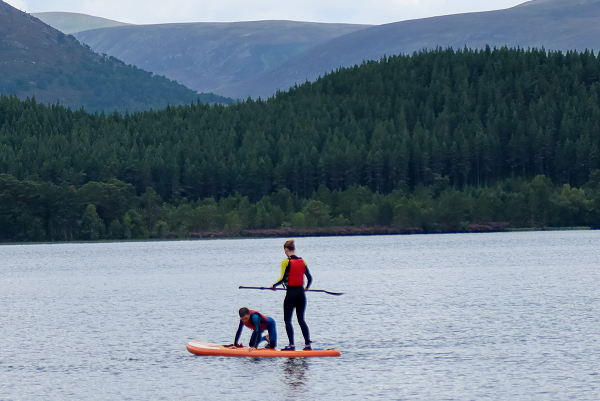Stand Up Paddleboarding (SUP)
Stand Up Paddleboarding (SUP) has been growing in popularity at an increasingly fast rate in the last 10 years and is now a large part of the Scottish paddling scene.
Boards in Scotland currently are predominately ISUPs (inflatable boards made through a drop stitch construction) although there are more paddleboarders using hardboards for a variety of reasons. Boards come in all shapes and sizes depending on where you want to go paddling.
SUP is accessible for all ages and abilities. It allows for the opportunity to enjoy paddling at your own pace whilst exploring Scotland's scenery.
What is the risk?
There are dangers associated with SUP such as:
- Not knowing how to swim adequately
- Going out in bad weather
- Boarding in shallow rocky waters
- Paddling alone
- Not wearing or using buoyancy equipment
- Not understanding paddle use
Falling into the water and not being efficiently prepared or trained can cause major issues for those taking part in SUP. Weather conditions can also make paddle boarding difficult and could hamper participants being able to return to the board fully. This is why lifejackets must be worn by every user, regardless of ability.
How to minimise the risk
- If you can, always go with a friend. It’s more fun, and they can help you if you get into difficulty.
- If you are going out alone, always tell someone where you're going and when you'll be back. Don't leave the house without a mobile phone or communication device.
- Bringing your phone to take some photos? Make sure you keep it in a waterproof pouch. That way it won’t get wet, and you can use it to call for help in an emergency too.
- Check the weather forecast and tide times before you set out. If the water is too choppy, you might find it difficult, especially if you are a beginner. And be aware, the conditions can change quickly.
- Avoid offshore winds. They will quickly blow your paddleboard far out to sea, which can make it extremely tiring and difficult to paddle back to shore. Avoid launching in windy conditions.
- You should wear a suitable personal flotation device. This can be a buoyancy aid or a lifejacket. Choose one that still allows you plenty of movement so you can paddle freely. Not only will it keep you afloat, but it will also help give you time to recover should you fall in – and chances are you will!
- Wear a wet or dry suit at all times of the year
- You should use a paddleboard with an appropriate leash. There’s nothing more frustrating than having to swim after your paddleboard if you fall off. The leash will also help you stay connected to your board if you get into trouble and help you float. It is not recommended a leash in used in a white water environment, however

Further information
- Please visit the Paddle Scotland Webpage, or alternatively download the SUP Safety Sheet using the linked thumbnail image above.

